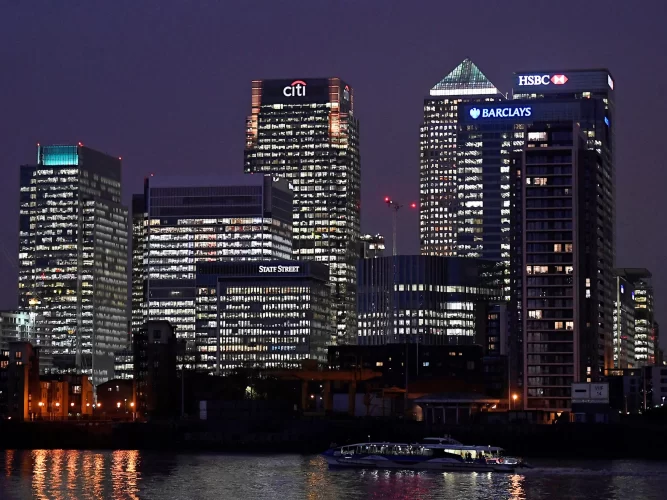The Role Of Net Zero Banking Alliance To Lead Towards A Net Zero Future

Categories :
The first progress report by UNEP’s Net Zero Banking Alliance highlights more than half of its member banks to have set credible science-based net zero targets for 2050, including major players like Bank of America, HSBC, and Standard Chartered in the lead. What are the major trends and trajectories of the banking and finance industry to achieve a net zero carbon future?
Achieving net-zero emissions by 2050 is a necessity. According to a report from Swiss Re, an insurance giant, climate change could cut the world economy by $23 Trillion in 2050. In an era where environmental consciousness has become more than just a buzzword, the global banking industry is stepping up to the plate with unprecedented commitments to combat climate change. Carbon emissions are by far the global economy’s biggest externality, and as a result, no single group has been held accountable for reducing them.
Banks are stepping up to the challenge. The new UN-convened group, the Net-Zero Banking Alliance, brings together 134 banks from 43 countries. Altogether, they manage up to $74 trillion in assets, which accounts for 41% of the global banking assets.
As the banking and finance industry steers itself toward this ambitious target, several major trends and trajectories are emerging to guide the way.
Decarbonisation targets and commitments
Banks, investment firms, and financial institutions are increasingly recognizing the urgency of aligning their activities with the goals of the Paris Agreement. These institutions are no longer content with business as usual; instead, they are embracing ambitious, science-based targets to significantly reduce their carbon footprints. These targets encompass not only their internal operations but extend to their financing and investment activities as well.
According to the first progress report of Net Zero Banking Alliance, over half of the member banks, including Citibank, Bank of America, and HSBC, have now set intermediate decarbonisation targets. These targets prioritise areas of the member’s most carbon intensive business or their most significant financial exposures to be achieved by 2030.
Sustainable finance and investment
According to Morgan Stanley, large global banks have an opportunity to develop new ‘green’ sources of revenue tied to everything from carbon trading to helping finance the estimated $50 trillion needed to achieve Net Zero by 2050.
Sustainable finance and investment mark a significant departure from traditional financial practices, driven by a heightened focus on environmental, social, and governance (ESG) considerations. This shift is based on a common understanding that financial decisions should encompass more than just profit margins; they should also consider their broader societal and environmental impacts.
Investors, from institutional giants like pension funds to individual shareholders, are increasingly integrating ESG criteria into their investment strategies. They seek opportunities that not only offer financial returns but also align with ethical and sustainable principles. For instance, sustainable investment funds, green bonds, and ESG-linked financial products have surged in popularity, reflecting the growing demand for investments that contribute positively to both the bottom line and the planet.
Bank of America, which has pledged to achieve net-zero emissions in its operations and supply chain by 2030. The bank is also targeting $1.5 trillion in sustainable finance by 2030, focusing on investments that support the transition to a low-carbon economy.
Carbon pricing and disclosure: A progress made towards achieving a net zero carbon future
Transparency and accountability are integral to achieving net-zero targets. Carbon pricing mechanisms and disclosure requirements are gaining traction, compelling financial institutions to assess and disclose their exposure to carbon-related risks. Regulatory bodies and industry organizations are pushing for standardized reporting of carbon emissions and climate risk assessments, enabling stakeholders to make informed decisions.
The Task Force on Climate-related Financial Disclosures (TCFD) framework, backed by the Financial Stability Board, has emerged as a global standard. More banks are voluntarily adopting TCFD recommendations to enhance their climate risk management and disclosure practices. This shift is instrumental in building trust and credibility in the finance sector's commitment to net zero.
Ensuring net zero carbon future with green banking and sustainable lending
Green banking is evolving as a cornerstone of the industry's net-zero strategy. Financial institutions are introducing innovative products and services to promote sustainability. This includes green loans for renewable energy projects, energy-efficient mortgages, and sustainable credit cards that contribute to reforestation efforts.
Additionally, some banks are reevaluating their lending practices and divesting from fossil fuels. JPMorgan Chase, for example, recently pledged to cease financing coal and Arctic oil drilling projects. HSBC recently announced US$ 1 billion to fund Climate-Tech Startups.
Technology and innovation for net zero carbon future
The adoption of cutting-edge technology and innovation is accelerating the finance sector's transition to net zero. Artificial intelligence, machine learning, and data analytics are being harnessed to assess climate risk, optimize investment portfolios, and identify sustainable opportunities. Blockchain technology is enhancing transparency in supply chains, tracking the provenance of green assets, and enabling carbon offset markets.
Furthermore, fintech startups are emerging with a focus on sustainability, offering digital solutions for eco-conscious banking and investment. These innovations are streamlining sustainable finance and making it more accessible to a broader range of consumers and businesses.
Collaboration and partnerships
Collaboration and partnerships across industries are essential drivers of the net-zero agenda. Financial institutions are teaming up with governments, non-profit organizations, and the private sector to leverage expertise and resources.
“Achieving net zero will take the combined and cooperative action of governments, nonprofits and the private sector”, says Brian Moynihan, chair and CEO of Bank of America.
“Collectively, the private sector can have a major impact on what path the world travels over the next three decades, but it will require driving significant changes across all aspects of how companies and businesses run their day-to-day operations for that path to lead to a healthier environment”, he adds.
The Net Zero Banking Alliance, which includes major players like Amalgamated Bank, Bank of America, Standard Chartered, Citibank, HSBC, Morgan Stanley, and Westpac, together with the power of the United Nations, exemplifies this collaborative spirit. Such alliances set ambitious collective targets and advocate for supportive regulatory environments.

Pallavi Singal is the Vice President of Content at ztudium, where she leads innovative content strategies and oversees the development of high-impact editorial initiatives. With a strong background in digital media and a passion for storytelling, Pallavi plays a pivotal role in scaling the content operations for ztudium’s platforms, including Businessabc, Citiesabc, and IntelligentHQ, Wisdomia.ai, MStores, and many others. Her expertise spans content creation, SEO, and digital marketing, driving engagement and growth across multiple channels. Pallavi’s work is characterised by a keen insight into emerging trends in business, technologies like AI, blockchain, metaverse and others, and society, making her a trusted voice in the industry.










